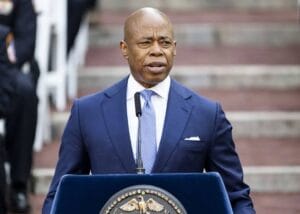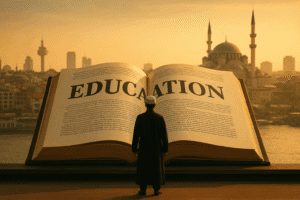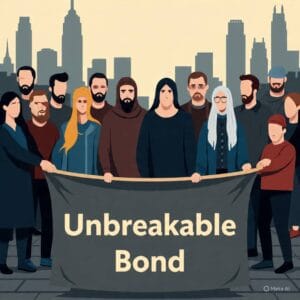EDUPEACE| Industry 1.0 versus Education 1.0

Prof. Mahfouz A. Adedimeji
Today, education is different from what it used to be in terms of contents and methods of delivery. Given that the only permanent thing in life is change, changes that have characterized human society have also impacted on education and it is desirable to make education conform to needs of the age without neglecting the foundation.
From the pre-Industry age when people relied on agriculture to support life, the advent of the First Industrial Revolution has made the world change much and we are now at the beginning of the Fourth Industrial Revolution.
Education is a product of the society and its enabler. However, the society itself is conditioned by cultural and economic realities that have engendered social transformations and waves of civilization.
In the last few centuries for example, the world has witnessed three Industrial Revolutions, the First, the Second and the Third, otherwise known as Industry 1.0, Industry 2.0 and Industry 3.0, which have all impacted on education.
Industry 1.0
The First Industrial Revolution or Industry 1.0 started with the period of mechanical refinement and the invention of devices to make life easier for the living. A central figure in this Revolution was Thomas Newcomen who invented the steam engine in 1712.
The steam engine was a major invention as it made the process of removing water from the bottom of mines easy apart from facilitating digging deeper into the earth.
By the time Henry Cort also introduced the pudding and rolling technique for making wrought iron in 1784, the First Industrial Revolution had taken shape as a development of the 18th Century.
From individuals to organizations, the agricultural age came to an end andthe age of industry began with people using machines to produce more than what they needed.
Textile industry began with textile machines while coal was used to substitute wood as coal and iron industries became the first users of steam engines. Increased demands for products began and the steam engine was further used to transport products and people.
One major feature of the First Industrial Revolution was the use of railroads for transportation and the substitution of hands with machines in carrying out basic activities. There were also the increased reliance on iron and its processes, which started the era of mechanization and mass production.
Through Industry 1.0, a new world was born and a new wave of civilization took effect with textile, rail and steam power being its major drivers.
Education 1.0
Prior to the era of Education 1.0, the family was the main provider of education as it was the responsibility of every household to educate and train its young ones. Children were raised and trained to socialize with others, participate in communal affairs, have a sense of identity and cultural awareness about the norms and values of their society.
In many societies, education before this era was limited to what was provided at home. In many parts of Asia, Europe, South America and Africa for instance, education was an informal process of evolving a complete gentleman or his variant across cultures. However, with the First Industrial Revolution the concept of the classroom was born with education, especially instruction, taking place in the school.
Thus, Education 1.0 is the instructive approach to education where emphasis is on the 3 Rs: Receiving, Responding and Regurgitating. Receiving entails that learners would pay attention to the teacher, who is often a master who knows it all, through the communication skill of listening.
Without listening, there would be no learning or education. Following receiving is responding, which takes the form of taking notes, asking questions, making comments, reading recommended books and writing on the worksheets or notebooks. Then, students regurgitate what is received by answering questions posed to them either orally or in writing as a way of determining the extent to which they have learnt.
Except in few instances based on the dynamism of the teacher and the adoption of functional methodologies, Education 1.0 is generally an approach which makes education a one-size-fits-all affair.
As explained by S. Y. Tan, D. Al-Jumeily, J. Mustafina, A. Hussein, A. Broderick and H. Forsyth in their “Rethinking our Education to Face the New Industry Era” (2018) and I. O. Oloyede in his “Nigeria’s Education in the Context of COVID-19 Pandemic”, students are passive learners usually.
The philosophy underpinning Education 1.0 is that of the “sage on the stage”, with the students consuming bits and pieces of knowledge as doled out by the teacher who does the “chalking and talking” as each unique student loses their individuality to being part of a class.
As expected, what the teacher knows or what he expects learners to know is all that they know, including the choice of learning materials. Students are led to do what the “sage on the stage” or teacher expects from them and the good ones are rewarded with good grades.
Essentially, in the context of Education 1.0, “besides libraries and news outlets, the educator is the students’ knowledge source and the venue of learning will be the traditional classroom”. This approach may remain the same for many years to come as it is today in many countries and societies that still conceive or operate education in this sense.
EDUCATION GROUND ZERO: CHARACTER IS KEY
In characterizing the evolution of education across eras, it is easy to take Education 0.0 for granted but it is the most important level. Like ground zero, it is the starting point of all education.
This is understandable because zero, though taken for granted, is the most important discovery in human life without which man would not have reached the moon, the computer would not have been invented and there would been no starting point for building the number system.
In the same sense, the foundation of all education is Education 0.0 which is the traditional education provided at home. This education emphasizes character and it results in the person that the Greeks would refer to as an arête, meaning a “complete man”, who the English call a “perfect gentleman”.
The world is amok today because the earth or foundation has been neglected and the focus is on the moon. Little wonder that the world appears to be sinking with us as the high rates of crime, poverty, diseases, violence and oppression have made life a huge hell for billions of people.
Rather than sound knowledge that emphasizes character, everything revolves around money and anyone without money is deemed unsuccessful.
The industrialized, quantified education has made almost everyone to become Winston Churchill’s driver. The former Prime Minister of Britain, Churchill, once recalled that he took a taxi to the BBC for an interview and he asked the driver to wait for some time.
The driver apologized, saying, “I can’t because I have to go home to listen to Winston Churchill’s speech.” Impressed, Churchill gave the taxi driver ten pounds without telling him who he was. After collecting the money, the excited man said, “I’ll wait hours until you come back, sir! And let Churchill go to hell!” In other words, there was no value where there was no money.
Character is superior to money but to many misguided people, all what matters is money. Money is good but being obsessed with it at the expense of character is evil. Character is key and that is an ultimate goal of education.













